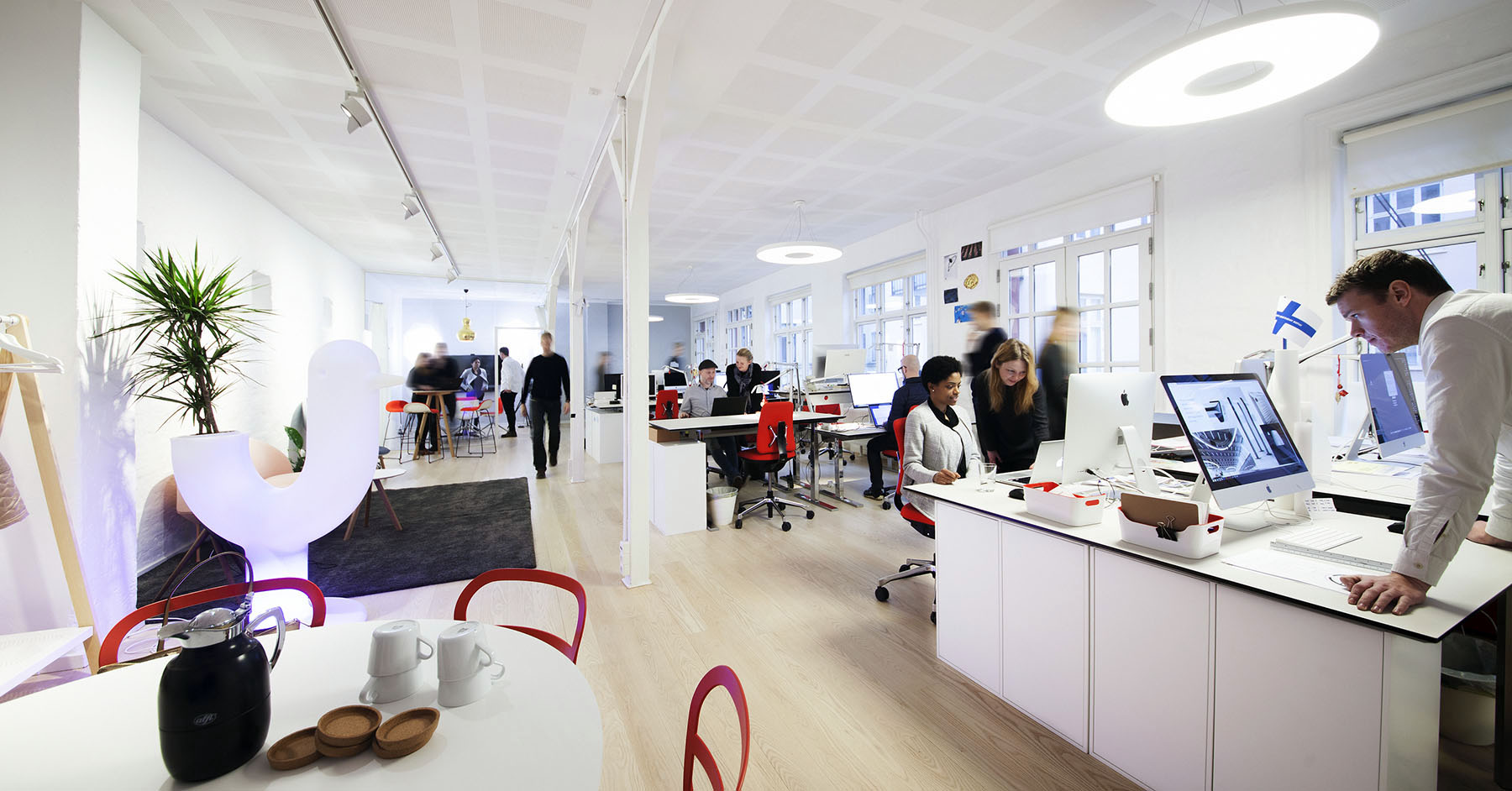Co-working spaces: are they the right environment for you and your business?
We spend a quarter of our lives at work. It’s all about making that time worth it. How we feel in the morning when we enter the door, and what kind of environment we are spending our long working hours in, really does matter. What are the pros and cons of shared office spaces? Read about the latest trends, the different types of co-working spaces here. Plus hands-on tips on how to choose one.
What is what
According to a recent Global Coworking Survey by Desk Mag and Awfis Community, 82% of co-workers believe that co-working enhances work productivity, and 70% of them feel healthier than they did while working in a conventional office.
So what is co-working and how does it differ from sitting in a ’normal’ office? By definition, co-working is a style of work that involves a shared workplace. Unlike a typical office, the people at a co-working space are usually not employed by the same organization, but coming from multiple companies, industries and a diverse professional background.
The PROS
This mixed and lively atmosphere can be super attractive for startup companies, home workers, independents, or those who travel often, working in relative isolation. Being part of a co-working community means that you are surrounded by potential customers, mentors, and people that you can possibly outsource work to. The community can make you more productive and social at the same time.
As flexible working conditions are a priority for the Millennial generation, who will make up 75% of the workforce by 2030, big companies must enter the game as well. In this sense, the future of co-working could be like a “melting pot”, where early stage startups could work alongside corporate innovation teams, who work “offsite” in a co-working office and thus achieve a higher level of creative thinking.
The CONS
But shared office spaces also have their downsides, and therefore are not suitable for everyone. According to my experience, sitting at a new table every day can be a distraction for many people, so does the constant flow of new people and random noises. Good headphones are a must.
Booking a meeting room can be a hassle, especially if you need it ASAP, and it can be hard to keep your focus at times, when there are so many other things to do around you, for example, attending that upcoming meet-up or having a coffee with that cute girl working just opposite of you.
Shared office spaces – bigger or smaller?
That being said, there are different types of co-working spaces, depending on what kind of environment you are looking for. There are the big ones like Republikken in Copenhagen or Betahaus in Berlin, that can sit hundreds of people at the same time, and you can just come by on a daily basis, rent a flex seat and be surrounded by new faces. Typically, these places offer printing services and refillable tea/coffee included in their prices. A big pro argument for them is the fact that they also function as a community space: they organize events, bootcamps, or meetups on a regular basis.
If you are the type who enjoys a bit more continuity and stability in your working environment, then definitely look for a smaller shared office space. Having your own desk/island of tables and familiar faces around you, yet still being in a co-working environment of less than a 100 people let’s say, is something that we did at our own space, Studio-CPH. In that sense, there is a major difference between the family-like atmosphere of Studio-CPH and those fast-paced surroundings that they have at Republikken or Betahaus. Try to be aware of that distinction, when you are choosing a co-working place for your business.
Next level concepts: multiple cities or in-house kindergartens
In the fast evolution of co-working spaces, there are some who take the whole concept to the next level. For example, Sp8ces is grouping multiple spaces under their brand, meaning that its members can choose from different locations and have the freedom to work from a hotel, restaurant, or even an organic bistro. Their basic idea is that these public spaces are not really occupied during the daytime, so why not make them accessible for freelancers or aspiring entrepreneurs to meet and network. I found it a great concept to utilize the already available resources that we have in our cities. Not only it generates a passive stream of income for the hospitality industry, but it's also a great way of reactive marketing, as co-workers and their network could potentially become guests of the restaurant/service later on.
Another type is WeWork, which is more like a global franchise of co-working spaces, which means that by buying their membership, you have access to their co-working offices from Singapore to Paris. This service is a dream for digital nomads or professionals constantly on the go.
Last but not least, there are some pioneer projects like Loffice in Budapest, which combines the services of a co-working space with an in-house kindergarten/daycare solution for the members’ children.
Overall, co-working spaces are on the rise for a reason. The flexibility that they provide is something that fits very well with our changing lifestyle and digital workflow. However, their increasing popularity doesn’t mean that they are the perfect solution for everyone.
Have you tried working in a co-working community before? What was your experience?



